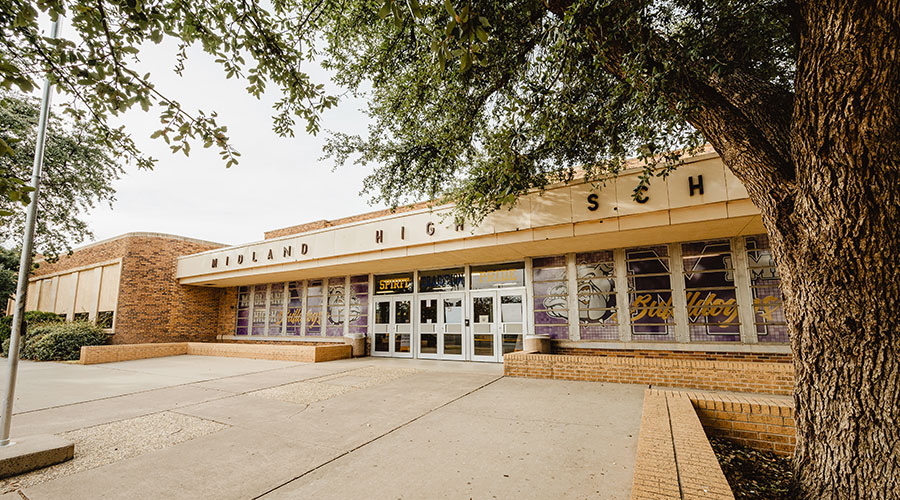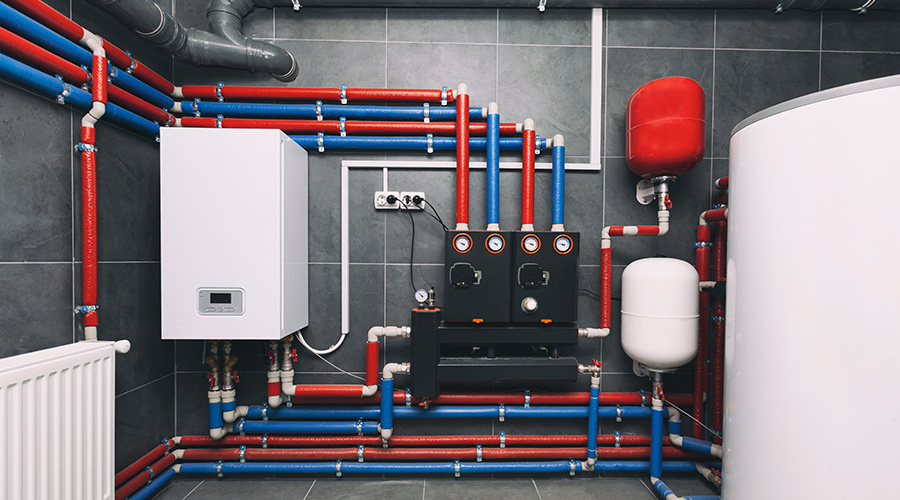 To upgrade boilers at the UCHealth Memorial Hospital power plant, crews removed roof panels and used a crane to lift out the old boilers and lower in new boilers, completing the task in three days.
To upgrade boilers at the UCHealth Memorial Hospital power plant, crews removed roof panels and used a crane to lift out the old boilers and lower in new boilers, completing the task in three days.Boilers: Specifying for Facility Needs
Managers who understand current and future facility needs can specify the proper boilers for their facility.
The goals of the 2014 boiler upgrade at UCHealth Memorial Hospital included better fuel efficiency, increased capacity, greater redundancy on peak-demand days, and the ability to support expansion and construction at the hospital and on campus. The next decision was to choose from among a consultant’s options.
“The first thing we did was hire a consultant to evaluate three options for replacing the boilers,” Wolfe says. “One option involved installing six modular boilers that could work in parallel and be turned on and off as needed to meet various demand levels during the day or season. It was initially thought that this would provide energy efficiency, but the study showed that there was not significant savings, and the higher maintenance costs voided this option.
“Based on the preventive maintenance and service intervals, having to do six different burners ended up being more maintenance man-hours, even though they were smaller.”
A second option involved installing three medium-sized boilers, while the third option — the one managers selected — called for installing two large, 15,000 hp boilers. The boiler manufacturer’s burners also offered the desired energy efficiency, including turn-down ratios to ensure efficiency, even when operating at less than full capacity or in warm standby modes, Wolfe says.
Timing is everything
With the new boilers selected, managers with UCHealth Memorial Hospital began planning the removal of the old equipment and the installation of new equipment. One of the first steps involved working with various parties throughout the facility to schedule times for system outages so the work could take place without compromising the health and safety of patients and staff.
“Overall, we had four heating outages to various portions of the hospital facility and five electrical outages that had to be coordinated in detail with clinical staff in order to prevent impact to patients and disruption patient care,” Wolfe says. “Each required weeks of pre-planning and staffing for off-hours execution, both construction workers as well as hospital staff.
Scheduling the replacement for summer had a cascading effect.
“It caused our pre-piping to be scheduled during the winter,” Wolfe says. “Unfortunately, that meant that we had to schedule heating outages to the hospital during the coldest time of the year. Plus, it had to be scheduled during colder night hours when we were able to schedule steam outages to sterilizers and other applications. We were literally distributing chemical heat packs to all the patients to make sure they stayed warm as the building temperature gradually decreased during that outage.”
The outage planning process also involved preparing for possible problems.
“We also worked extensively with the various stakeholders to develop the method of procedures for the outages and actually had back-out plans if something wasn’t going right, says Greg Gauna, the hospital’s director of design and construction. “We had a contingency to ensure we weren’t going to lose our operations.”
To accommodate the hospital’s needs for space heat and steam during outages, managers decided to bring in outside help.
“The first decision was to bring in a portable, trailer-mounted boiler to cover hospital needs during replacement,” Wolfe says. “Since this would be a 700 hp boiler and could only back up the summer boiler, we were limited to scheduling the actual boiler replacement during summer months.
“We had to build all new piping and wiring to that trailer location. It had been just a driveway, and we took it over and had to put in the full set of temporary utilities to that trailer, including the steam supply and condensate returns.”
Timing considerations for the replacement also involved removing the old boilers and bringing in the new units. To complete the task, the decision was made to remove roof panels on the power plant and then use a crane to remove the two existing boilers and bring in the new boilers. The process was finished in three days.
“We knew (a crane) was the only way to get the new boilers in, so we used it for taking the old boilers out rather than try to cut them in little pieces,” Wolfe says. “We knew that was going to take months of planning and preparation and system testing. The operation went fairly smoothly. It actually worked as planned.”
Related Topics:














